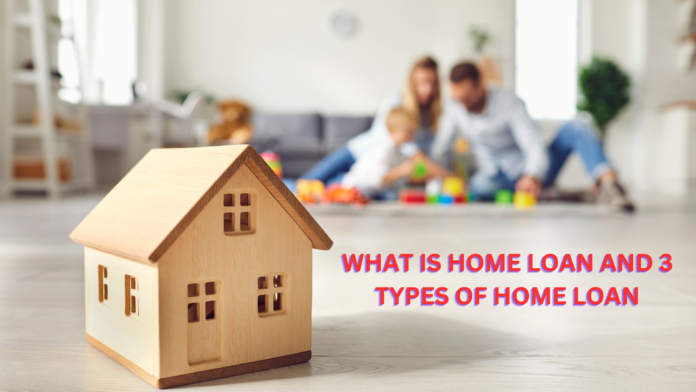What is home loan and 3 types of home loan
A home loan, also known as a mortgage, but home loans and mortgage loans are slightly different, is a financial product provided by banks or other financial institutions that allows individuals to borrow money to purchase a home. The loan is secured against the property being purchased, meaning that if the borrower fails to repay the loan according to the agreed terms, the lender has the legal right to seize the property. Home loans are typically repaid in monthly installments over a long period of time, often ranging from 10 to 30 years.

What is home loan and 3 types of home loan Types of home loans
There are several types of home loans available, each designed to suit different needs:
1. Fixed-rate home loan
– In a fixed-rate home loan, the interest rate remains the same throughout the term of the loan.
– It offers stability in monthly payments but may have higher starting rates than other loan types.
2. Adjustable-rate home loan
– In this loan facility, the interest rate changes from time to time depending on the market rate.
– It usually starts with a low interest rate, but it may increase or decrease over time.
3. Interest-only home loan
– Borrowers pay only the interest for a fixed period, after which they start paying both the interest and the principal.
– An interest-only home loan can be beneficial for people who are expecting higher income in the future.

What is home loan and 3 types of home loan How does a home loan work?
When you take a home loan, the lender provides the funds required to buy the property. In return, you agree to repay the loan amount (principal) along with interest over an agreed period. The house itself acts as collateral, which means that if you default on the loan, the lender can sell the property to recover the outstanding loan.
Main Components of a Home Loan
1. Principal: The original amount of money borrowed.
2. Interest Rate: The percentage of the loan amount charged as interest. This can be fixed or variable.
3. Loan Term: The period over which the loan must be repaid, usually between 15 and 30 years.
4. Down Payment: A percentage of the purchase price of the home that is paid upfront by the borrower, based on the loan term and the property value.

Benefits of Home Loans
Home ownership: Allows individuals to own a home without paying the full price upfront.
Tax Benefits: Many countries offer tax deductions on home loan interest payments.
Building equity: As you repay the loan, you build equity in your home, which can be a valuable asset.
Frequently Asked Questions
1. What is the minimum down payment for a home loan?
– The minimum down payment varies by lender and loan type, but typically ranges from 5% to 20% of the property value.
2. Can a home loan be repaid early?
– Yes, many lenders allow early repayment, check your loan agreement for details.
3. How does my credit score affect my home loan?
– A higher credit score may result in a lower interest rate, while a lower score may result in a higher interest rate or loan rejection.
4. What documents are required to get a home loan?
– Documents typically required include proof of income, credit history, property documents, and identity verification.
5. What happens if I default on my home loan?
– If you fail to make payments, the lender can seize the property and sell it to recover the loan amount.
6. Is it better to choose a fixed-rate or adjustable-rate home loan?
– It depends on your financial situation and market conditions. Fixed-rate loans offer stability, while adjustable rates may be more affordable initially but come with the risk of rising payments.
Home loans are a practical way to finance a property purchase, making home ownership accessible to many people. By understanding the different types and components of a home loan, you can make an informed decision that aligns with your financial goals and lifestyle.
Thanks And Regards






It offers stability in monthly payments but may have higher starting rates than other loan types.